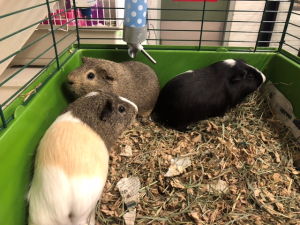Most of our greetings & farewells are pretty straightforward, especially ones that begin with good (like “good morning”, “good afternoon”, “good night”, etc.). But what about “goodbye”? Are you basically saying, “I hope you have a good bye”? What is a “bye”? Is it some old word once used to reference a certain time of day? No, none of that is the case. Because the “bye” actually began as an abbreviation, while the “good” wasn’t originally good at all.
Back in the 1300s, people would say “God be with you” when leaving the company of one another. As time passed, that phrase got shortened because of linguistic shifts (and, honestly, human laziness). By 1575, the Oxford English Dictionary listed the word “godbwye” for the first time, taken from a letter by English scholar Gabriel Harvey. In today’s parlance, Harvey’s poetic letter loosely translates to have read: “To reciprocate your gallon of goodbyes, I give you back a half-gallon of howdies.” (By the way, “howdy” was derived from the phrase “how do you do”.)
But the evolution of “God be with you” to “godbwye” to “goodbye” had it hiccups. Folks pretty much spelled the term however they felt like over many years. It was chaotic, for sure. Heck, even Shakespeare wrote it no less than 3 different ways across 3 different plays.
As for how “God” became “good”, most scholars believe people were influenced by all those other good phrases mentioned earlier, since “good day” & “goodnight” had already been in use since the 1200s. “God be with you” is still a pretty common phrase heard & said in religious settings today. But the term “goodbye”, which first started showing up in the early 18th century, eventually replaced “God be with you” as the secular way of saying farewell. So now, whenever you say “goodbye” to your workplace, you’ll at least know what you’re really saying as you say “good riddance” to your boss (at least until tomorrow.)
Got a Mundane Mystery you’d like solved? Send me a message via Twitter (@AndyWebbRadio), or shoot me an email at [email protected].


